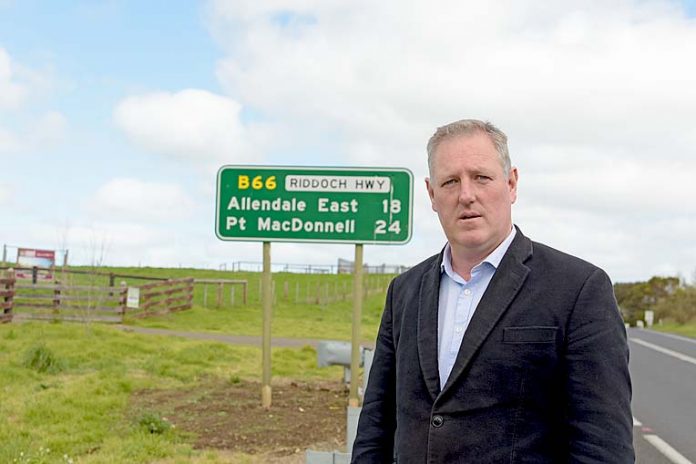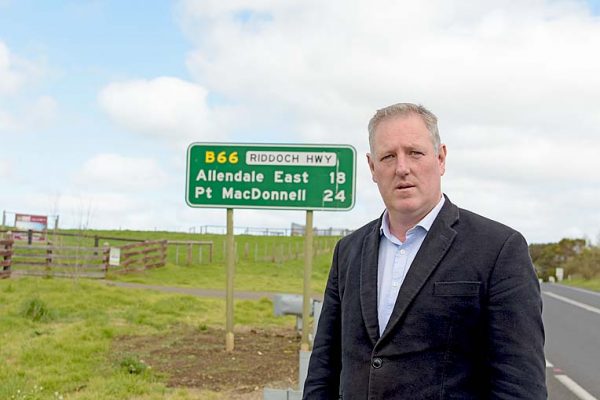

A “KNEE-JERK” reaction to change the speed limit from 110kph to 100kph on three major South East roads by the end of the year has been labelled “disappointing” by civic leaders.
The Department of Planning, Transport and Infrastructure South Australian road safety strategy 2020 Towards Zero Together is targeting speed reductions for roads based on crash rates and road type.
As a result, the Limestone Coast will see speed limits reduced by 10kph on the Riddoch Highway from Mount Gambier to Port MacDonnell, Carpenter Rocks Road and Clay Wells Road.
“Rather than taking a blanket approach to reducing rural speed limits across the state as initially proposed, speed reductions were determined on those roads with the worst crash history,” a DPTI spokesperson said.
“The default rural speed limit of 100kph will be applied to eight rural roads to improve road safety in regional areas.”
But Independent Member for Mount Gambier Troy Bell questioned why the State Government did not consult with the local community or the South Australian Local Government Association before arbitrarily deciding to reduce the speed limit on two roads within the electorate.
“This is an out-of-touch city-centric government and again they have proven they have no desire to listen to regional communities,” Mr Bell said.
“This decision is opposed by the LGA and I concur 100pc with their opinion – if the road is not up to standard, fix it, don’t lower the speed limits.”
Grant District Mayor Richard Sage said the government should have focused on road maintenance and conducted studies before making such a significant change.
“Studies should have been conducted on the roads to figure out problems and work out what treatments were needed,” Mr Sage said.
“The government could have worked with local councils and associations to find local contractors for continual maintenance of these roads, rather than just adjusting the speed limit.”
Council leaders have urged state ministers to work with the region to find affordable solutions.
“Millions of dollars are being spent on major roads in Adelaide to reduce travel time by two to three minutes,” Mr Sage said.
“That spend should be spread right across the state.”
Mr Bell said the government continued to claim safety was the catalyst to reduce speed limits, instead of spending the money needed to provide safe roads for country motorists.
“I find it galling the State Labor Government will spend billions of dollars on roads and overpasses in Adelaide, but then claim there is not enough money to maintain country roads,” he said.
“Mark my words, if we allow the State Government to start reducing the speed limits on country roads, it will not end until all roads are reduced to 100kph.”
The DPTI claimed the government still had a commitment to improving country roads
in the state.
“The State Government remains committed to improving rural road infrastructure and $188m will be spent to improve and maintain regional roads in 2017/18,” a DPTI spokesperson said.
“We will also continue to support the implementation of safer speed limits on our roads as we remain focused on reducing the number of lives lost on our roads.”
Kingsley Country Fire Service group officer Grant Fensom said reductions to the speed limit were a knee-jerk reaction and would not necessarily change how people drive on the roads.
“I will always err on the side of caution when it comes to safety, but I think this is grasping at straws,” Mr Fensom said.
“How does this improve people driving to the road conditions or weather conditions?”
Mr Sage said he was struggling to understand the precedence for why the speed limits were changed.
“I want to know what the specific criteria was for the reduction in the speed limits,” Mr Sage said.
“The roads were designed for a 110kph limit and I can’t see what has changed to see a reduction.”
Mr Bell called on Road Safety Minister Peter Malinauskas to provide detailed statistics to explain why the changes had been made.
“As many people know, statistics can be used to tell very different stories,” Mr Bell said.
“We simply don’t have enough detail to form a considered opinion – that is why consultation is usually an integral part of any decision-making process.”
Mr Malinauskas was unable to be contacted for comment due to being away on leave.







